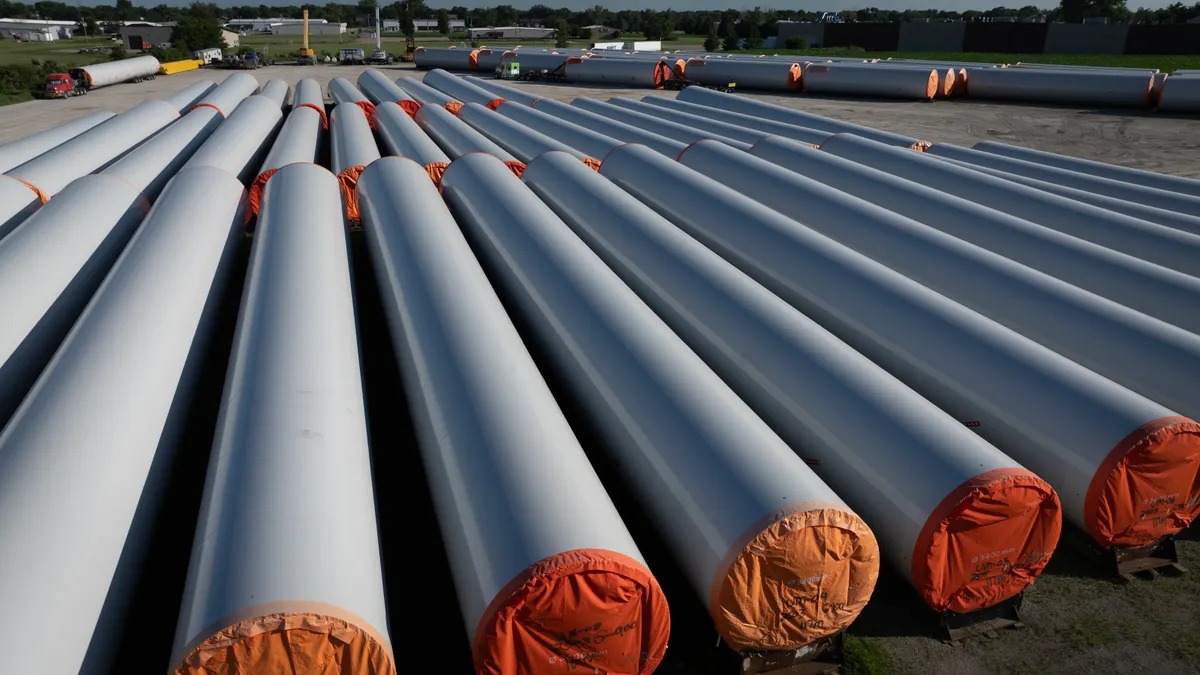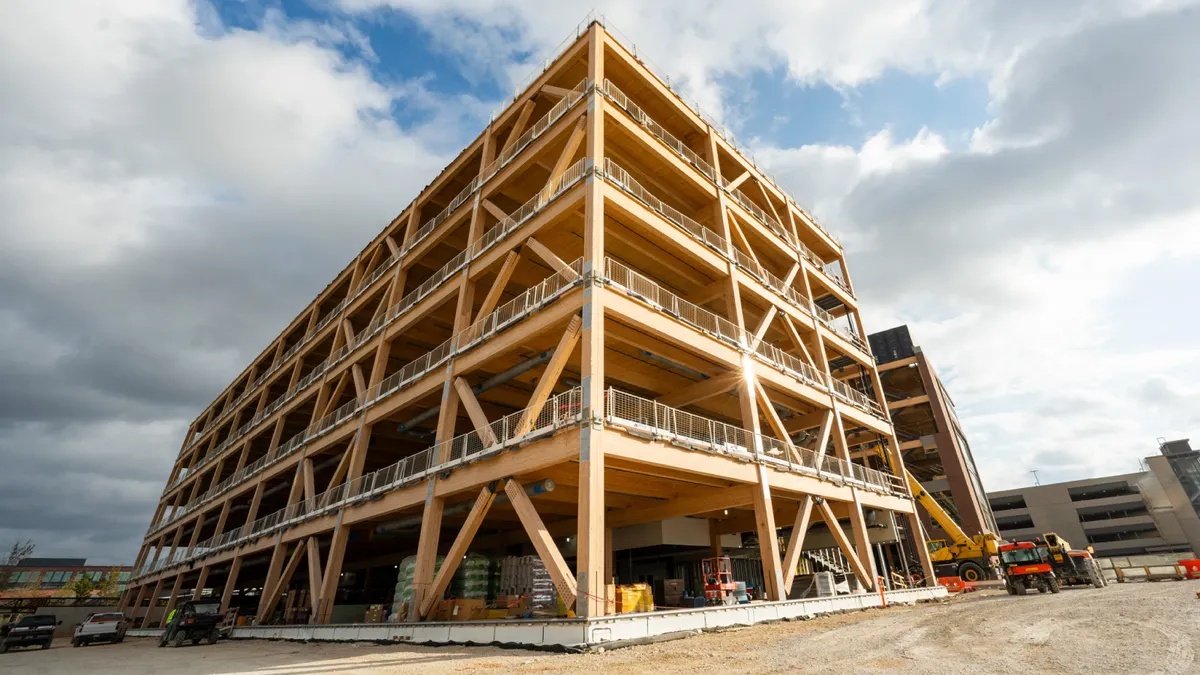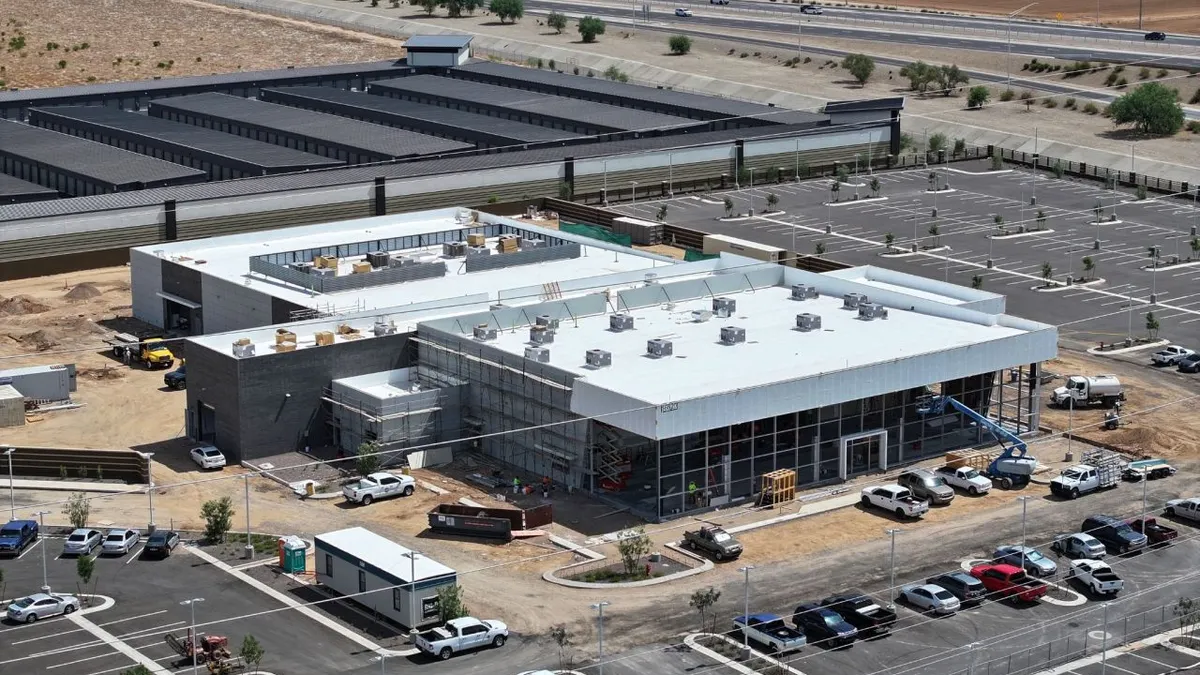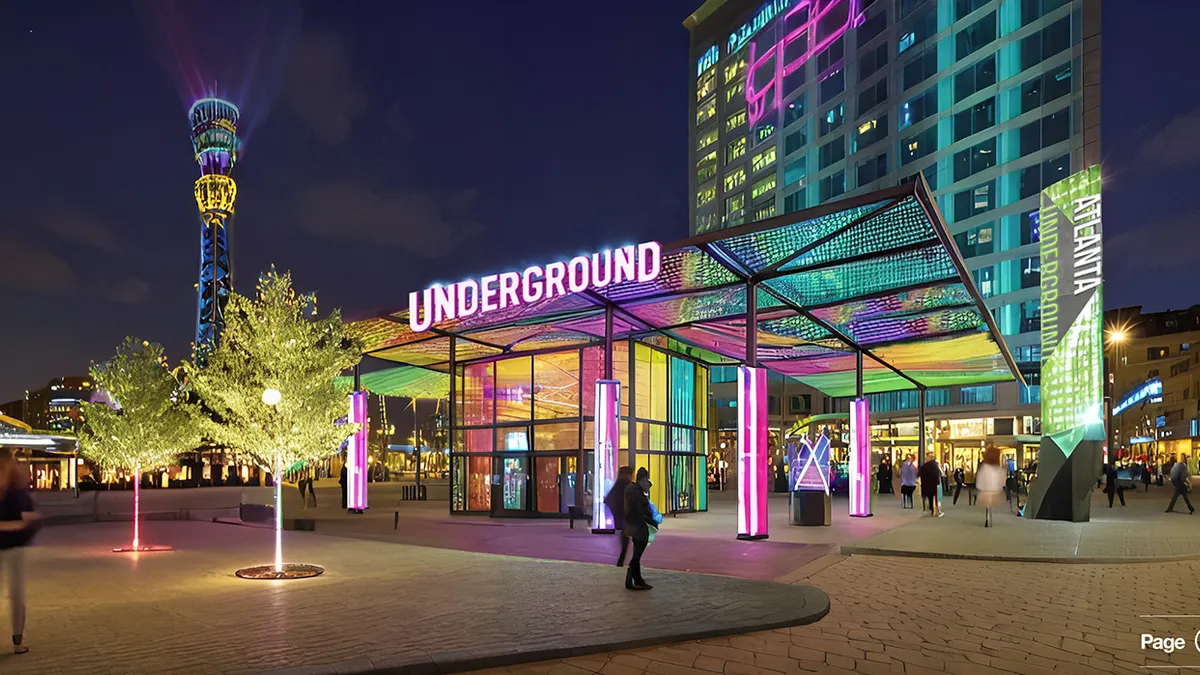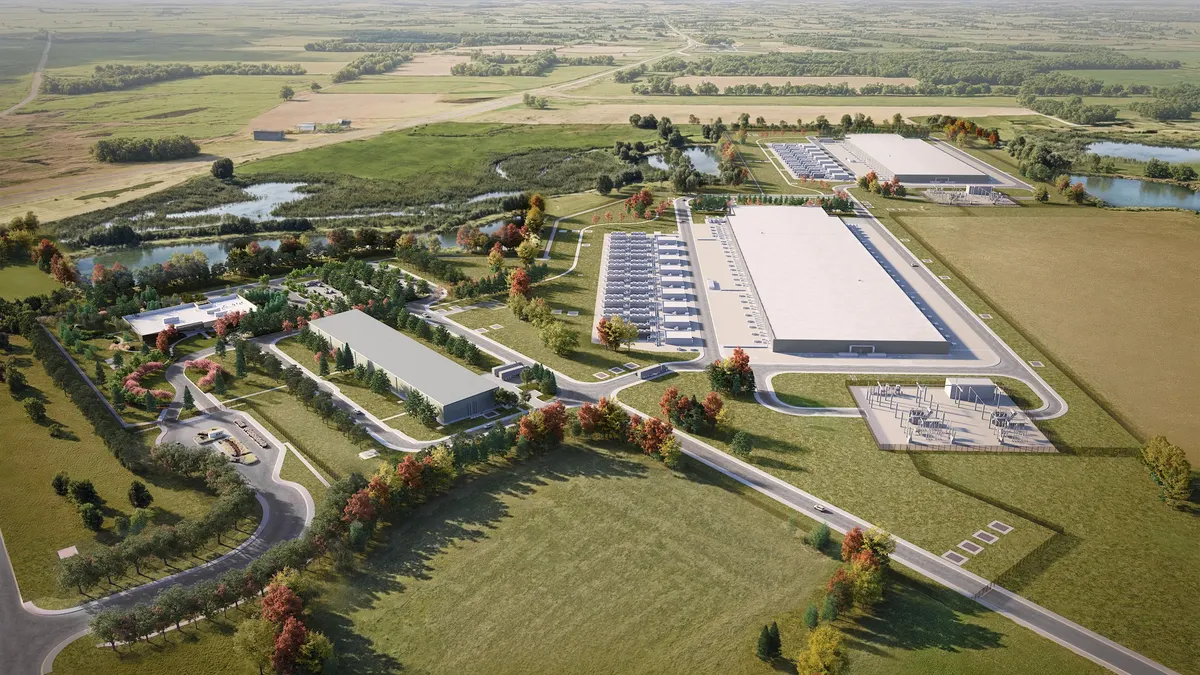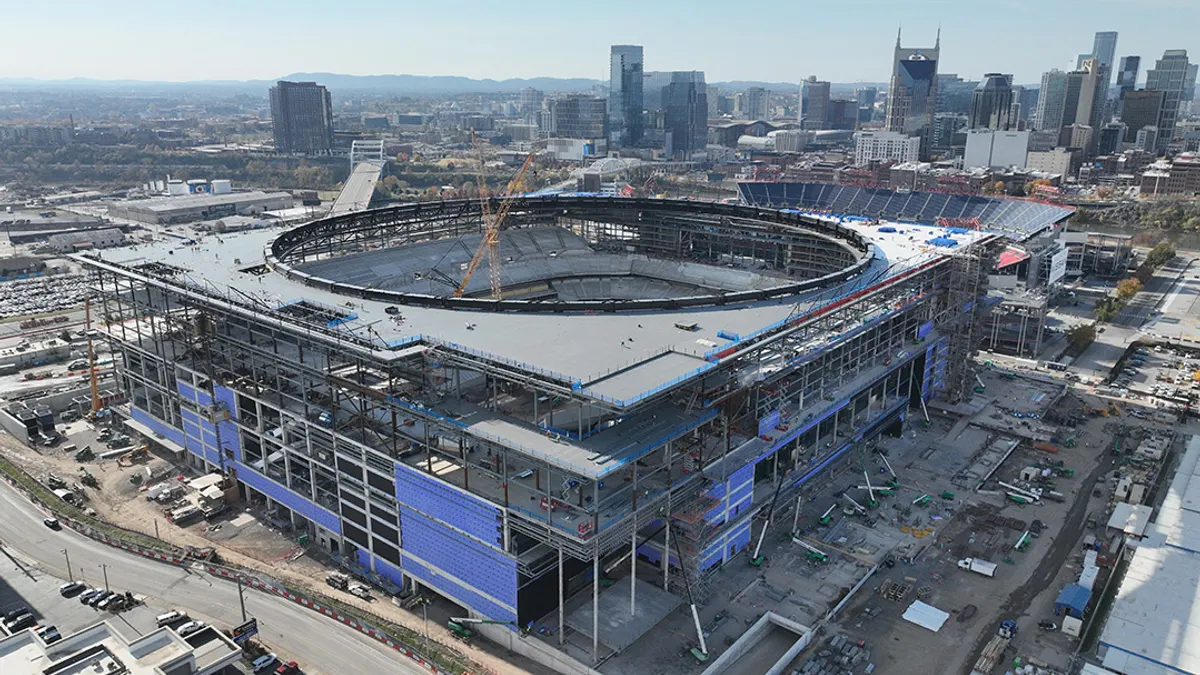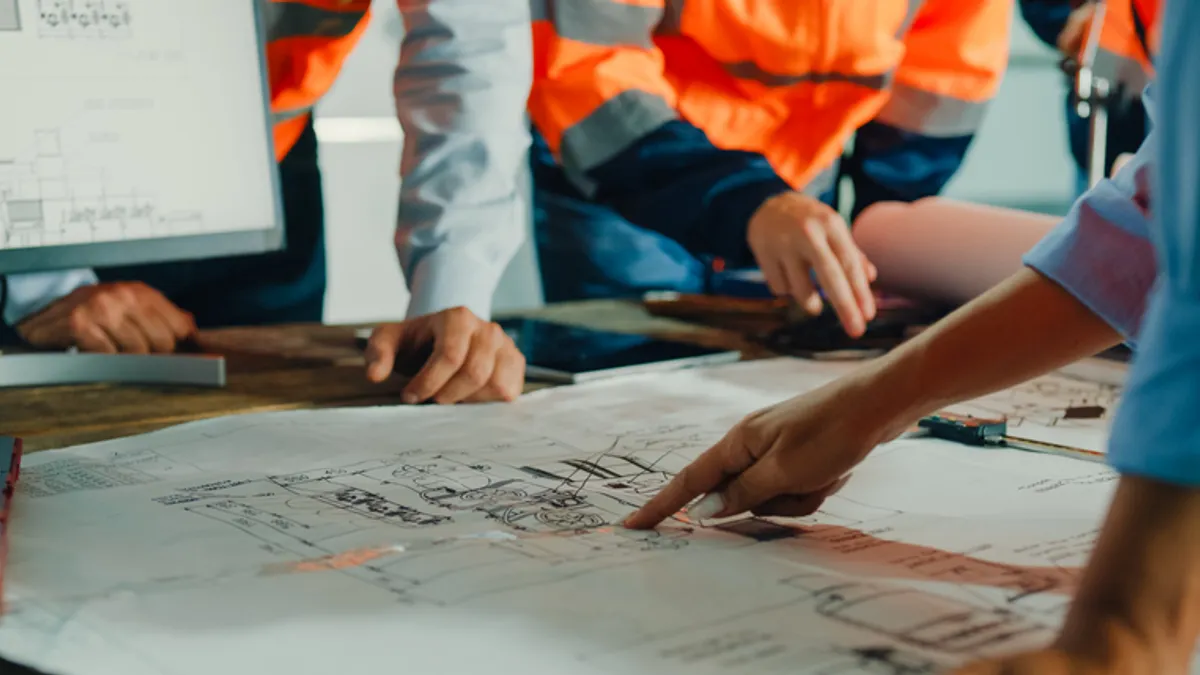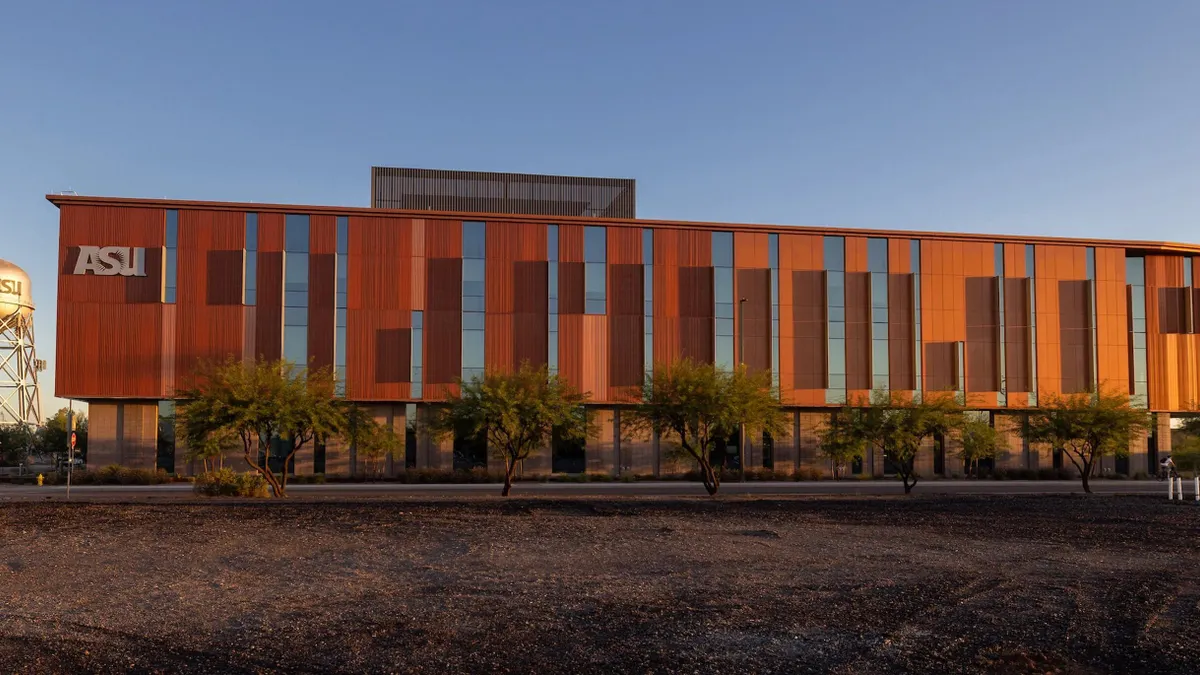In the first half of the year, one word continued to appear in headlines surrounding broad economic and political change: “uncertainty.” Construction Dive’s Uncertainty Series delves into how this lack of clarity is affecting contractors and what the future holds.
Uncertainty around trade policy and its impact on materials costs could lead more contractors to hold off on shovels hitting the ground.
Construction input costs climbed 6% through May on an annualized basis and have remained up more than 40% since February 2020, according to the U.S. Bureau of Labor Statistics. That jump follows several months of policy uncertainty, with tariff announcements rolled out unevenly and implementation timelines in flux.
In fact, contractors say tariff hikes have already triggered delays on certain projects. Pittsfield, Massachusetts-based Unistress Corp., for example, recently laid off 233 workers after the postponement of two major contracts due to steel price volatility. The precast manufacturer said the delays caused significant financial pressure, temporarily shrinking its backlog and forcing the company to cut nearly half its workforce.
Much of the confusion stems from how President Donald Trump has rolled out tariffs this year. The Trump administration initially suspended many country-specific duties, then announced in July that they would resume on Aug. 1 for trading partners without a deal. That has left many construction firms unsure how to plan procurement.
“The impact of tariffs will impact not just the price, or cost, but also the quantity consumed of such goods,” said Michael Guckes, chief economist at ConstructConnect, a Cincinnati-based construction data provider. “The fact that many tariffs have been delayed, some several times now, may mean that more inflationary pain is to come.”
The levies will directly affect key construction components, namely rebar, structural steel, copper and aluminum, said Michael O’Reilly, vice president at Rider Levett Bucknall, a New York City-based construction consultancy firm.
“Given the current landscape, we anticipate continued volatility in materials pricing through the second half of the year,” said O’Reilly. “A meaningful decline in costs appears unlikely without greater clarity or stabilization in trade dynamics.”
If materials costs stay elevated, that could prolong the caution already taking hold across parts of the construction industry, said O’Reilly. Much of that reaction will depend on how administration policies and broader economic conditions evolve over the coming months.
“Contractors are adapting where they can, through smarter procurement, tighter project planning and more selective bidding,” said O’Reilly. “While uncertainty remains, the industry is staying agile and watching closely for signs of stabilization that could unlock more activity in the second half of the year.”
Contractors shift procurement strategies
Though the whipsaw of changing or delaying tariffs may not be as constant as the earlier days of the Trump administration, new changes are still rolling out.
The U.S. announced plans to install a 50% tariff on copper imports, a common material on data center projects, starting Aug. 1. The move follows the increase on steel and aluminum tariffs from 25% to 50% earlier this summer.
Despite the tariff hikes however, planning activity rebounded in June, according to Dodge Construction Network.
Yet that growth has not fully erased underlying volatility or unease. That’s because if more tariffs move forward as proposed, additional pricing pressure could materialize in the second half of the year, according to construction economists.
“In the five months ending the year, construction material prices have overall increased by 5.8%, making the latest price hikes one of the steepest on record,” said Guckes. “Only a few times in the past 20 years have we seen such meteoric price rises including in 2007, 2017 and 2020.”
Additional tariffs are pushing contractors once again to brace for more availability issues on imported specialty materials. Shortfalls in these product categories have triggered project delays in the past, especially when owners resist using substitute products.
Those issues will put a dent on private construction activity. Private developers already scrapped more projects in May than in any other month on record. Cancellations on private construction jumped 62.6% in May, according to the latest data from ConstructConnect.
Potential workarounds
To avoid disruption, some firms are renewing their focus toward alternate procurement strategies, said O’Reilly. That includes early work packages, bulk-purchases and warehouse storage.
Concord, California-based Swinerton has increased its use of mass timber, a method less impacted by steel and aluminum tariffs. The move helped mitigate risk and improved schedule and budget efficiencies, said Kevin Smith, vice president of Swinerton’s Carolinas division.
Its mass timber affiliate, Timberlab, has taken the strategy further by vertically integrating its supply chain. With domestic fabrication facilities already online and a sawmill planned for 2027, the company has reduced its reliance on imported steel and joists, said Chris Evans, president of Timberlab.
“These strategies should be transparent and developed in close collaboration with project owners to proactively manage risk,” said O’Reilly. “One key approach is to explore alternative materials that can be sourced domestically or from countries with fewer tariff-related disruptions, helping to stabilize costs and timelines.”
Capacity worries
Guckes said the U.S. does not have the workforce or capacity to quickly replace imported construction materials with domestic production. Labor force participation already sits near record highs and unemployment remains low, meaning few workers are available for companies to hire.
So, even if these factories are brought online, the current workforce is neither large enough nor trained for the scale and types of goods the construction industry currently depends on, said Guckes.
As material costs continue to climb amid constrained capacity, the result could be a period of stagflation, where contractors face both slowing demand and rising prices heading into 2026, said Guckes.
“Our labor force is neither skilled up for, nor physically large enough and with sufficient free capacity, to produce the types and volumes of goods we currently import,” said Guckes. “The full execution of the presidential administration’s tariff strategy as-is would thus logically result in both increased prices and reduced consumption volumes.”
These interconnected factors, along with the flow of private equity, investor sentiment and immigration dynamics, will likely determine the pace and resilience of construction pipelines moving forward, said O’Reilly.
“While recent tariff activity has certainly been a factor, it hasn’t been the primary driver of construction trends in 2025,” said O’Reilly. “Looking ahead, construction activity in the second half of the year will likely be shaped more by macroeconomic forces than by tariffs alone.”



